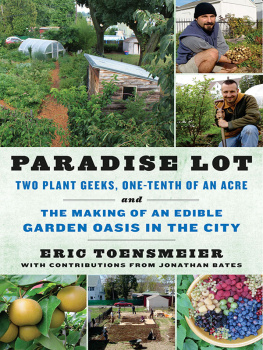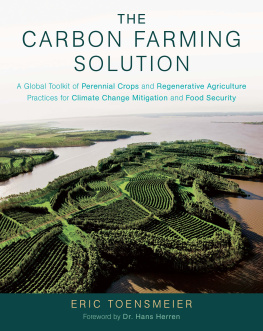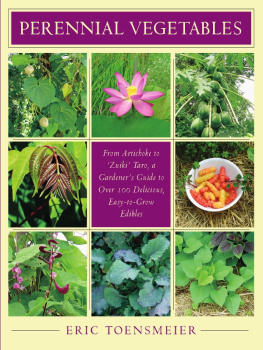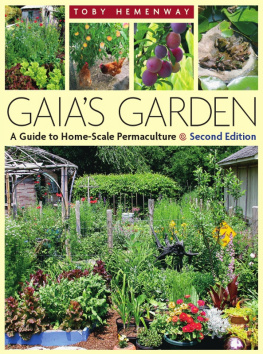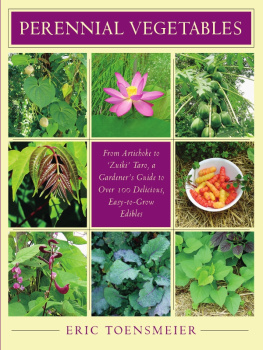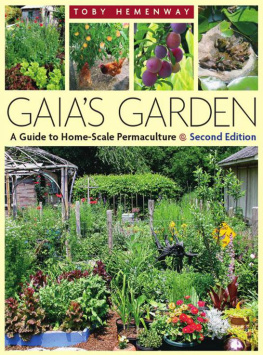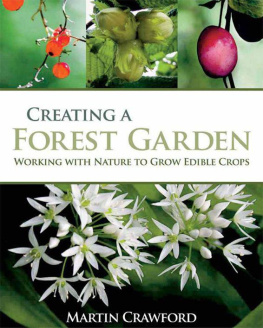PARADISE LOT
TWO PLANT GEEKS, ONE-TENTH OF AN ACRE
and
THE MAKING OF AN EDIBLE
GARDEN OASIS IN THE CITY
ERIC TOENSMEIER
WITH CONTRIBUTIONS FROM JONATHAN BATES
Chelsea Green Publishing
White River Junction, Vermont
Copyright 2013 by Eric Toensmeier.
All rights reserved.
Unless otherwise noted, all photographs copyright 2013 by Eric Toensmeier.
No part of this book may be transmitted or reproduced in any form by any means without permission in writing from the publisher.
Developmental Editor: Brianne Goodspeed
Project Manager: Hillary Gregory
Copy Editor: Alice Colwell
Proofreader: Helen Walden
Indexer: Lee Lawton
Designer: Melissa Jacobson
Printed in the United States of America.
First printing January, 2013.
10 9 8 7 6 5 4 3 2 1 13 14 15 16
Our Commitment to Green Publishing
Chelsea Green sees publishing as a tool for cultural change and ecological stewardship. We strive to align our book manufacturing practices with our editorial mission and to reduce the impact of our business enterprise in the environment. We print our books and catalogs on chlorine-free recycled paper, using vegetable-based inks whenever possible. This book may cost slightly more because it was printed on paper that contains recycled fiber, and we hope youll agree that its worth it. Chelsea Green is a member of the Green Press Initiative (www.greenpressinitiative.org), a nonprofit coalition of publishers, manufacturers, and authors working to protect the worlds endangered forests and conserve natural resources. Paradise Lot was printed on FSC-certified paper supplied by Thomson-Shore that contains at least 30% postconsumer recycled fiber.
Library of Congress Cataloging-in-Publication Data
Toensmeier, Eric.
Paradise lot : two plant geeks, one-tenth of an acre, and the making of an edible garden oasis in the city / Eric Toensmeier ; with contributions from Jonathan Bates.
p. cm.
Includes bibliographical references and index.
ISBN 978-1-60358-399-2 (pbk.) ISBN 978-1-60358-400-5 (ebook)
1. Urban gardeningAnecdotes. I. Bates, Jonathan, 1974 II. Title. III. Title: Two plant geeks, one-tenth of an acre, and the making of an edible garden oasis in the city.
SB453.T59 2013
635.091732dc23
2012043044
Chelsea Green Publishing
85 North Main Street, Suite 120
White River Junction, VT 05001
(802) 295-6300
www.chelseagreen.com
Praise for Paradise Lot
Our connection to place defines us as gardeners and farmers just as much as the plants we choose to grow. The integration of perennial plantings, microclimate, and natural beauty comes about by listening to the land. What a delight to then have one of Americas preeminent permaculture teachers share his personal story with both place and partner. Sometimes that meaningful insight we need in shaping our own garden path comes from hearing of the successes and foibles other gardeners found on their path. The gift Eric Toensmeier and Jonathan Bates offer in Paradise Lot is their heart for all things green.
Michael Phillips, author of The Holistic Orchard
and The Apple Grower
Just when I figured I had heard it all in growing food, comes a book that makes me realize I dont know the half of it. Paradise Lot is an amazing, almost unbelievable account of how to grow some 150200 food- and nitrogen-producing plants on a measly one-tenth of an acre, providing food year-round in a cold climate. The authors reveal in great detail how they do this, starting with poor urban backyard soil and using totally organic and permaculture methods. They have raised 400 pounds of perennial fruits and vegetables in addition to many annual vegetables per year in this tiny garden. With more time, knowledge, and labor, they are sure they can produce appreciably more. If you want your imagination challenged and intrigued, this is the book for you. As the authors say, here is proof positive that with proper knowledge and will there is no such thing as food scarcity.
Gene Logsdon, author of A Sanctuary of Trees
and Small-Scale Grain Raising
Eric has a leisurely, entertaining, and personable way of revealing how his own edible forest garden evolved. Along the way, the reader will learn design guidelines that can be used in virtually any climate. A good read full of insight and science.
Robert Kourik, author of Designing and Maintaining
Your Edible LandscapeNaturally
Paradise Lot is an inspiring book that encourages exploration of the possibilities of growing edibles in any and every yard, no matter how small. And not only tomatoes or apples, but all sorts of edibles from hog peanuts (taste much better than their name) to pawpaws to mints to jostaberries. Join Eric Toensmeier and his friend Jonathan Bates on their ten-plus-year journey in creating a garden of eatin in a very small city lot. I cant wait for the sequel!
Lee Reich, PhD, author of Grow Fruit Naturally,
The Pruning Book, and Landscaping with Fruit
Although many of us dream of creating our ideal urban homestead from scratch, the reality is far less pristine: toxic soil, rampant exotic species, outdated codes, and all the other grit of city life. Paradise Lot is a practical manual, based on hard-won lessons, for working positively with the realities of our cities to create a sustainable, peaceful, and abundant oasis in the urban jungle. In this vivid and engaging work, Eric Toensmeier entices us with his journey as an example, explaining what to do, and what mistakes to avoid, to develop our own versions of an edible urban paradise.
Toby Hemenway, author of Gaias Garden
Paradise Lot is a magnificent story about how two young broke landless plant geeks transform an urban lot into a permaculture heaven capable of producing all their fruit and vegetables as well as attracting suitable mates. The book is a groundbreaking work on temperate-climate permaculture as well as a personal saga, as the authors discovery and discussion of the differences between theory and practice go beyond anything in the current permaculture literature. The book has a lot of information on growing and using various perennial food plants and, of particular value, it includes specific accounts of what didnt work and why as well as what did. Paradise Lot should be particularly useful to those with small lots or poor or abused soil. Much writing in permaculture is for people with plenty of land and money. This is permaculture for the rest of us. Best of all, Paradise Lot is fun to read. It overflows with lovelove of plants, love of land, love of adventuring on the edge of knowledge, and love of living. Its hard to put down. I read it in two large gulps.
Carol Deppe, author of The Resilient Gardener
and Breed Your Own Vegetable Varieties
Paradise Lot is a timeless classic of urban permaculture in action that clearly shows design evolution over time. This is a true model of the change the world needs.
Geoff Lawton, founder of Permaculture Research Institute
and creator of Greening the Desert
CONTENTS
Part One: Sleep
(20002004)
Part Two: Creep
(20042007)
Part Three: Leap
(20072009)
Part Four: Reap
(20092012)
SLEEP
20002004
F ew gardeners would have looked out at the small, flat expanse of compacted fill and thought, Its perfect! The front yard was a short, steep slope of asphalt with a tiny strip of sterile gravel and subsoil. Two shady side alleys led to a backyard that looked like a moonscape, sparsely populated with tufts of crabgrass. Two large Norway maples, reviled as weeds that poison anything growing beneath them, hung over the garden from the north side. And the house itself was soulless, all straight lines, devoid of personality. It was exactly what we were hoping for.
Next page
